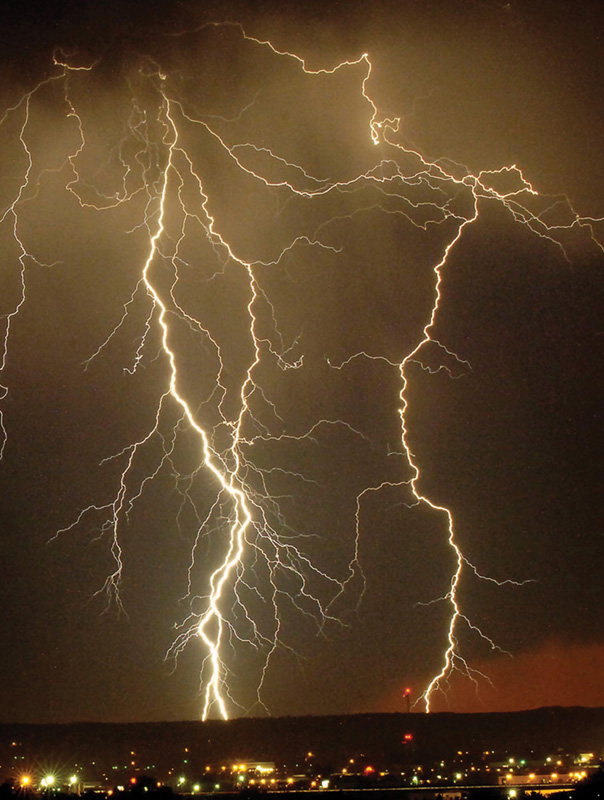
WHAT IT IS A shock that keeps on shocking
WHY YOU WON’T DO IT Because nobody’s that unlucky, are they?
According to popular folklore, lightning never strikes the same place twice. But comforting though that thought may be, it’s far from the truth – multiple strikes happen all too regularly. Of course, there’s no good reason you’d want to be struck by lightning even once, let alone twice – but here’s how it could happen.
In 2003, a scientific study funded by NASA at the University of Arizona identified the locations of almost 400 lightning strikes, and revealed that about one-third of all strikes hit two or more spots close to each other. A number of these generated third and even fourth lightning strokes, but these were most likely to follow the paths of one of the first two strokes. All of this goes to show that it is quite possible to be struck by lightning twice by a single bolt.
Lightning is still poorly understood, but seems to be triggered when a strong electrical field builds up between negative charges at the bottom of a storm cloud and positive charges on the ground. A lightning strike is thus an attempt by nature to restore the circuit. It leaves a trail of charged or ‘ionized’ air in its wake, opening up a path for further strikes.
If an object is struck once, it is no less likely to be struck again, and tall, exposed points are obviously vulnerable. The Empire State Building, for instance, can count on being struck between 25 and 100 times each year.
In any one year, you have about a 1 in 700,000 chance of being struck by lightning. Fatalities stand at about 10 per cent, and usually result from the electric current stopping the heart or compromising other major organs. Survivors are likely to suffer burns and stroke-like effects.
You’re most likely to fall victim to a strike if you remain outside during a thunderstorm. Putting yourself next to a tall object, such as a tree or pylon, radically increases your risk, as does holding aloft an umbrella, flying a kite or waving golf clubs around. One man who was living evidence of lightning striking the same spot more than once was Roy Sullivan, a park ranger from Virginia who was first struck in 1942. A 27-year hiatus ensued before a further six strikes from 1969 to 1977. He also told of a further hit in his childhood though this incident could not be verified.